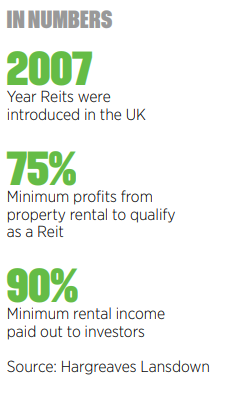Real estate investment trusts (Reits) ended 2021 as one of the top asset classes and delivered strong returns during the year, after the initial dip at the onset of the Covid-19 pandemic.
The sharp rebound in economic activity, inflation and record low interest rates have been supportive to the sector.
Certain areas of Reits also benefited from structural changes in the use of space as a result of the pandemic.
Fundamental factors
Economic fundamentals are important, as the ability to pay rent by tenants and rent increases by landlords depends on the health of the economy.
GDP growth this year in developed markets is forecast to slow from the elevated rates in 2021 while remaining above trend. There is optimism that Reits will perform well in 2022, albeit performance will be less impressive than in 2021.
Cashflows and rental growth should be in good shape due to improving occupancy rates and inflation. Further reopening and normalisation back to pre-pandemic trends, meanwhile, should be particularly beneficial for leisure, retail, student housing and high-quality office segments.
Headwinds from rising rates
Inflation is an important factor to keep an eye on. Reits generally perform well in an inflationary environment because commercial leases are often tied to inflation.
A strong economy and tight labour market should support the pricing power of Reits and hence earnings growth. That said, if inflation is too elevated or too persistent, central banks will be forced to hike rates more aggressively.
Reits are sensitive to interest rates. All else being equal, higher interest rates directly reduce the valuation of assets via discounted cashflows.
Given the sector is often highly levered, higher interest rates mean increased borrowing costs and may worsen certain financial leverage ratios.
With expectations of around six rate hikes in the US and another five in the UK in 2022 alone, investors must consider the potential headwinds from monetary policy shifts.
In 2022, we expect current elevated inflation to eventually slow in the latter part of the year, but to remain above 4%. Modestly high inflation and modestly strong growth suggests Reits should still do well.
Market movers
Another thing to consider is that publicly traded Reits move broadly in line with public equities. 
If the global equity market keeps moving higher, Reits will likely keep going up as well, providing a superior return over cash, bonds and other alternatives.
However, if the equity markets correct, sentiment on Reits will also turn sour despite relatively good fundamentals.
What about Reits’ relative performance to equities during 2022? From a macro analysis perspective, the dividend yield gap has historically been a good guide to the subsequent year’s performance for Reits.
Their dividend yield spread versus the broad global market has fallen sharply. If history is a good guide, it points to an underperformance for Reits versus equities this year.
Long-term trends
Beyond 2022, investors should look further than short-term fundamentals and focus firmly on long-term trends.
We like Reits that are exposed to the trends of digitalisation, supply chain management and sustainability. We believe some of the pandemic habits and ways of doing business will stick, and that companies will be investing to make the best use of space.
Real estate is going to play a big role in this transformation, with investors and regulators putting increasing focus on environmental factors as major economies have made net-zero pledges.
E-commerce has accelerated significantly during the pandemic and people have adapted to a new way of shopping.
Companies were faced with significant supply chain disruption and will be looking at investing in better solutions.
We believe there will be ongoing strong demand for industrial space, warehouses and real estate tied to logistics.
Digitalisation is another important theme and should be a continuing tailwind for data centres, for instance.
One segment that lacks clarity is retail and office Reits. While we believe there should be a recovery in those areas in 2022, the shift to a hybrid working pattern and online shopping leads to caution over the future demand.
The view from here
Overall, a diversified exposure to Reits make sense. We have a preference for Reits with an overweight to industrial warehouses and data centres.
Investors should be looking for Reits with underlying assets that have a high percentage of rents tied to inflation, low vacancy rates and a high percentage of rent collection.
Given that we are now moving toward the late-cycle stage of the economic recovery, investors may also consider whether they would like Reits that are defensive on the downside or have lower sensitivity to GDP growth, versus those that are most geared to the economic recovery.
Investors may also benefit from paying attention to whether ESG considerations are integrated into the investment process.
This article was written by Janet Mui, head of market analysis at Brewin Dolphin, and first appeared in the March edition of Portfolio Adviser magazine










